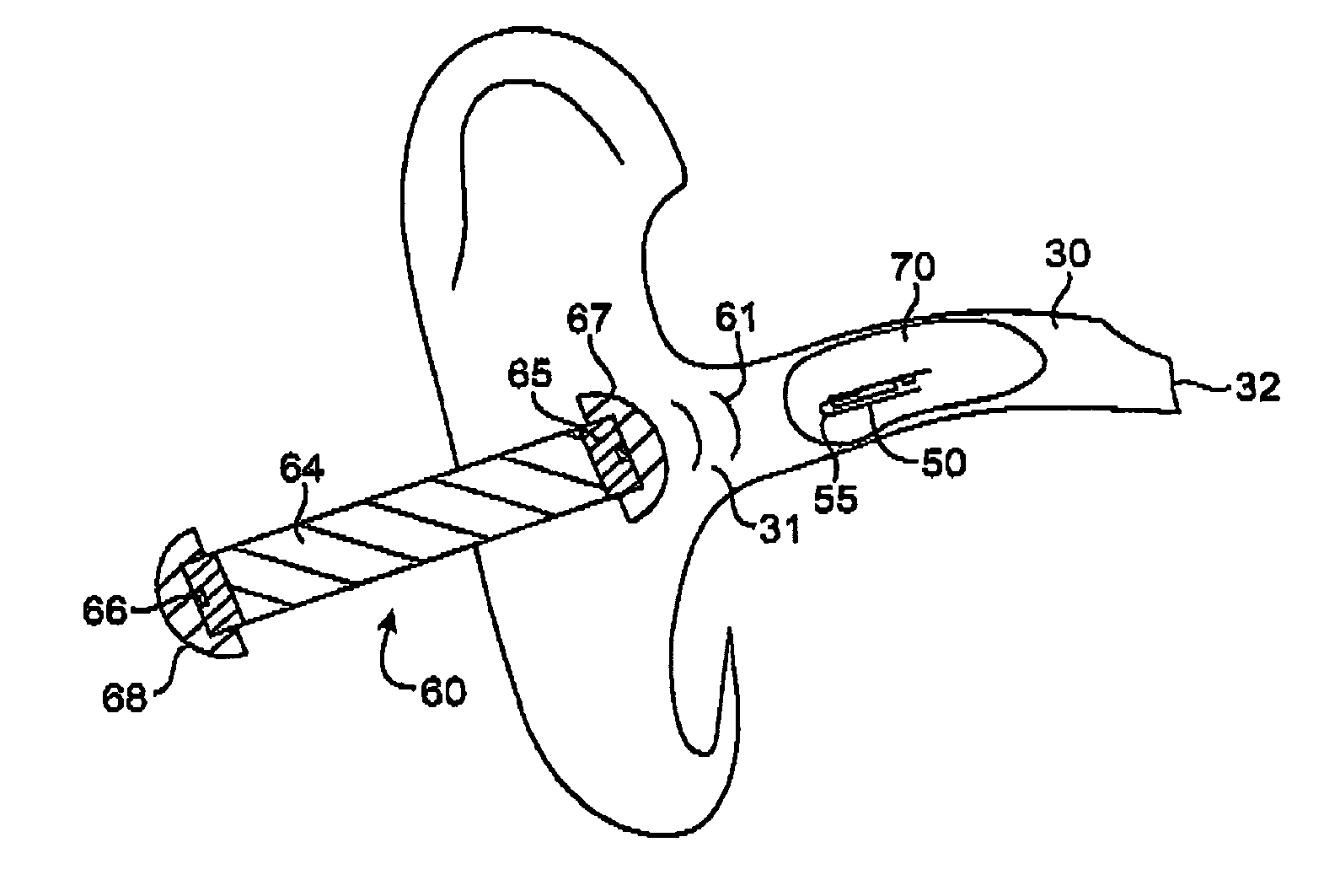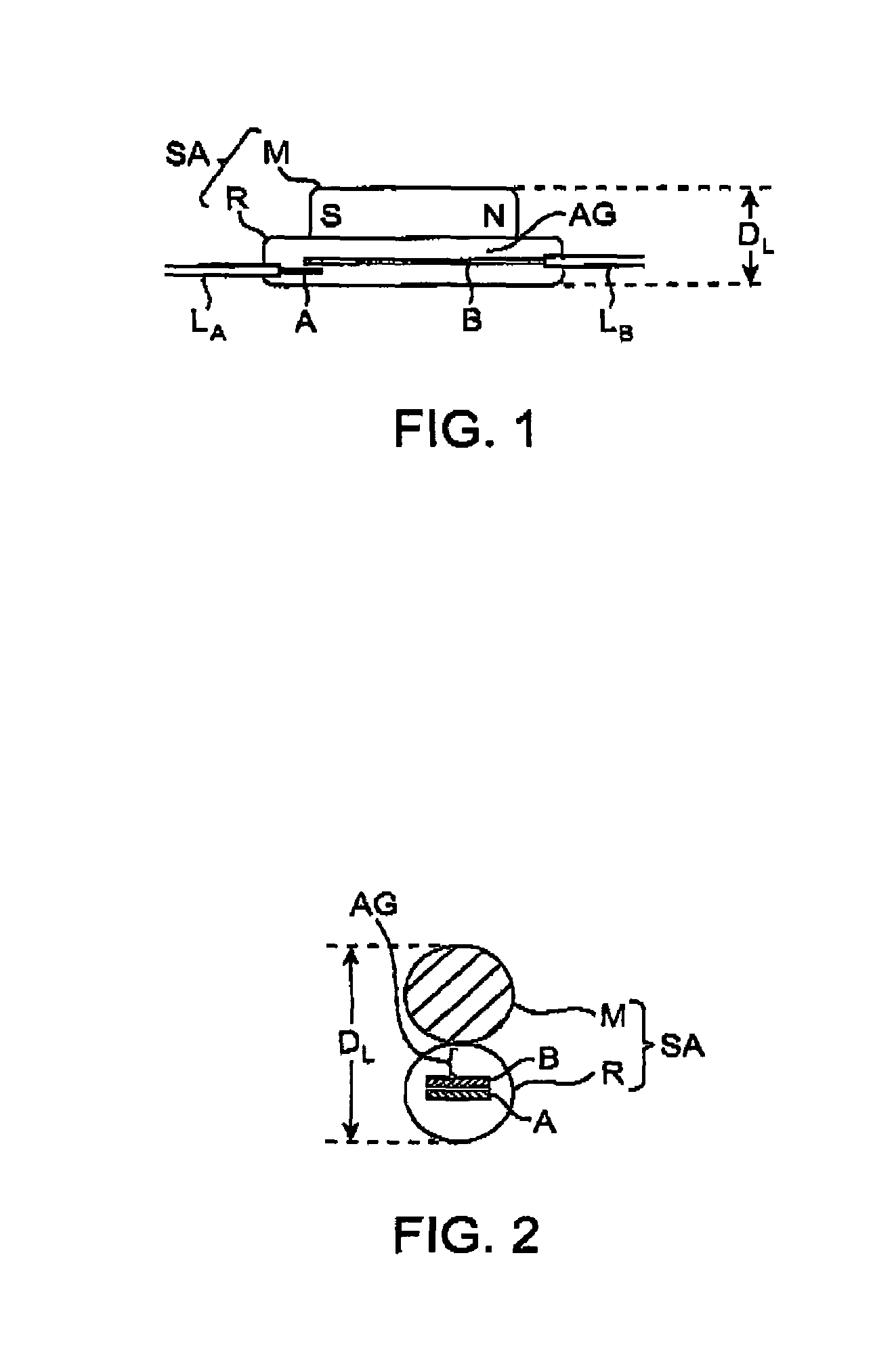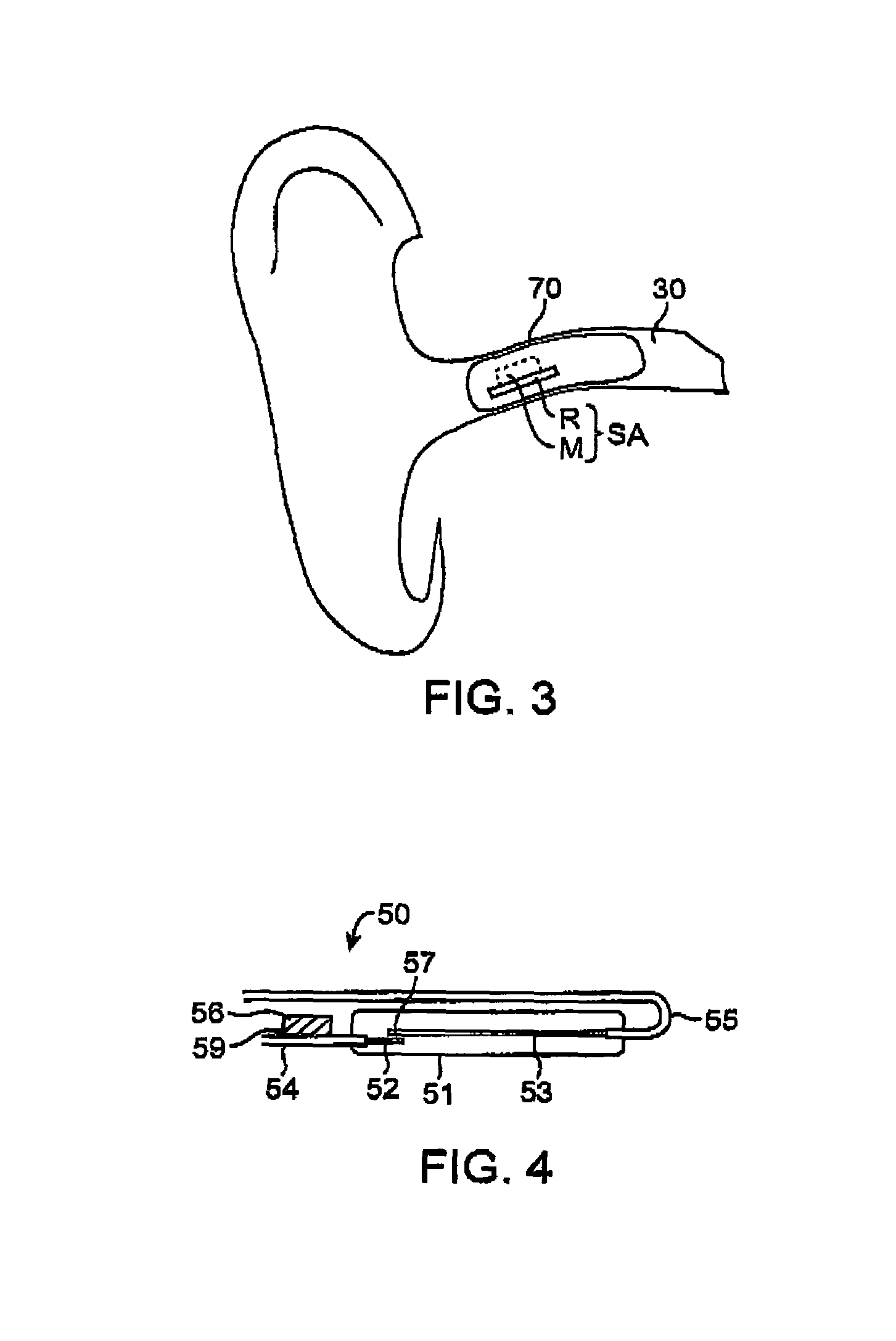Remote magnetic activation of hearing devices
a hearing device and magnetic activation technology, applied in the field of hearing devices, can solve the problems of inaccessible hearing devices or poor dexterity, and achieve the effects of convenient activation, less impact on the overall size of the associated hearing device, and convenient activation
- Summary
- Abstract
- Description
- Claims
- Application Information
AI Technical Summary
Benefits of technology
Problems solved by technology
Method used
Image
Examples
example 1
[0051]A latching reed switch assembly according to a preferred configuration of the present invention, shown in FIGS. 4–6, was constructed and compared to the prior art switch configuration shown in FIG. 1. The prior art latching reed switch assembly was based on micro-miniature reed switch model HRS-003DT manufactured by Hermetic Switch, Inc. of Chickasha, Okla. The prior art switch assembly included a latching magnet rod (M) constructed of Alnico material and positioned along the length of the tubular reed switch shown in FIG. 1. The magnet M was approximately 4.1 mm long and 1.8 mm in diameter, with a volume of approximately 10.4 mm3. The weight of the magnet was measured to be approximately 74 mg. The reed switch was approximately 5 mm long and 1.25 mm in diameter, with a volume of approximately 6.1 mm3. The reed switch weighed approximately 17 mg with a total of 11 mm of the lead wire attached. The combined volume and weight of the prior art reed switch assembly were approximat...
example 2
[0056]A control magnet was fabricated to control the latching reed switch assembly described in Example 1 above. The control magnet 60 shown in FIG. 12 was in the shape of a cylindrical rod having a length of 4.3 cm and a diameter of 5.3 mm. The body 64 of the rod was made of plastic and is attached to a pair of identical disk magnets 65 and 66. The two magnets were polarized across the length of the rod and were oriented to have opposing magnetic polarity as shown in FIG. 6. The disk magnets were made of NdFeB material sold by Radio Shack (model no. 64-1895). Each disk magnet was approximately 4.3 mm in diameter and 1.5 mm in height.
[0057]The control magnet also had two flanged stoppers (67 and 68), designed to prevent the control magnet from entering the ear canal and accidentally pushing or touching any of the components of the canal hearing device 70. Each stopper was made of polyurethane foam material but, alternatively, may be composed of any other suitable material such as pl...
PUM
 Login to View More
Login to View More Abstract
Description
Claims
Application Information
 Login to View More
Login to View More - R&D
- Intellectual Property
- Life Sciences
- Materials
- Tech Scout
- Unparalleled Data Quality
- Higher Quality Content
- 60% Fewer Hallucinations
Browse by: Latest US Patents, China's latest patents, Technical Efficacy Thesaurus, Application Domain, Technology Topic, Popular Technical Reports.
© 2025 PatSnap. All rights reserved.Legal|Privacy policy|Modern Slavery Act Transparency Statement|Sitemap|About US| Contact US: help@patsnap.com



